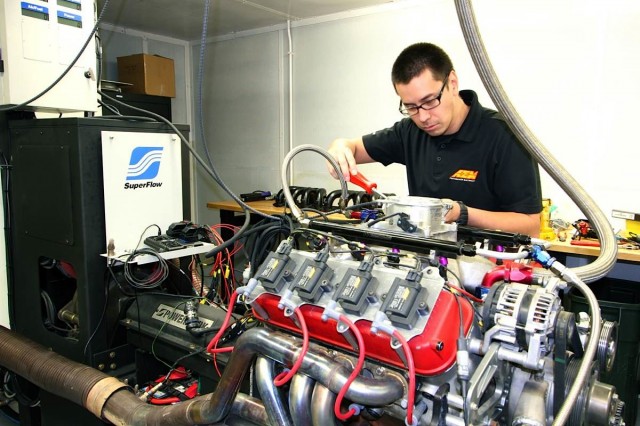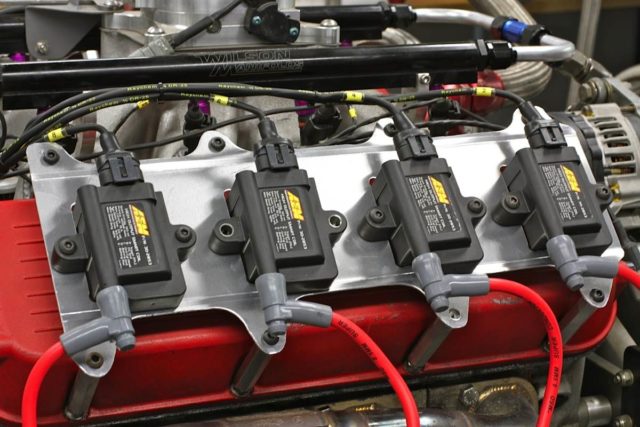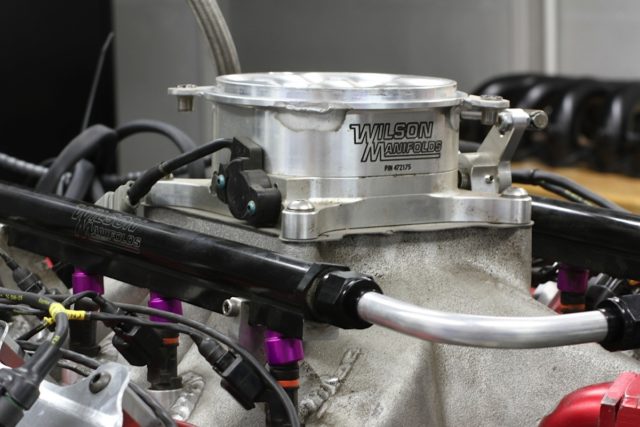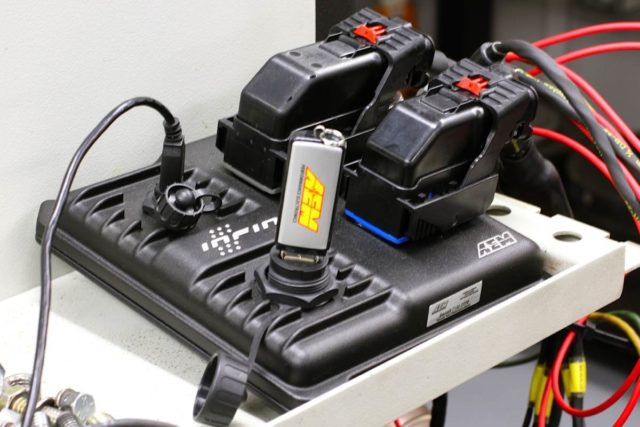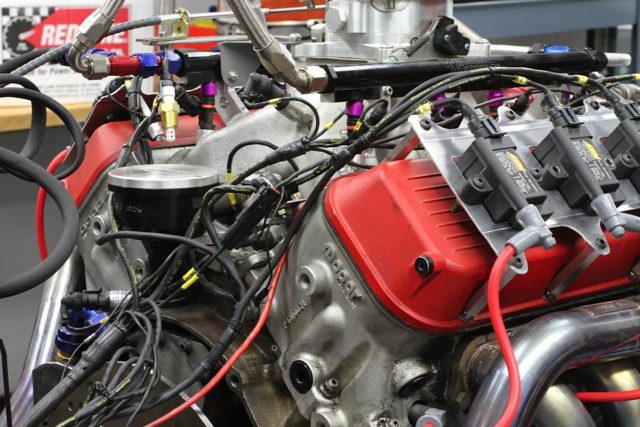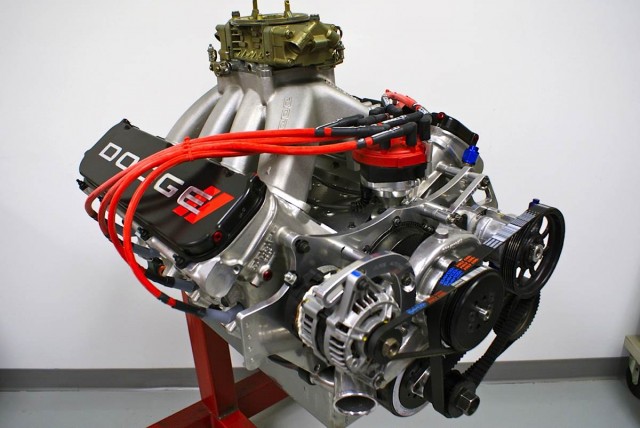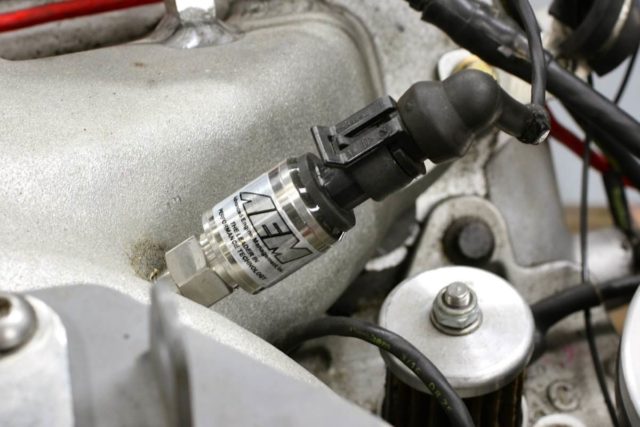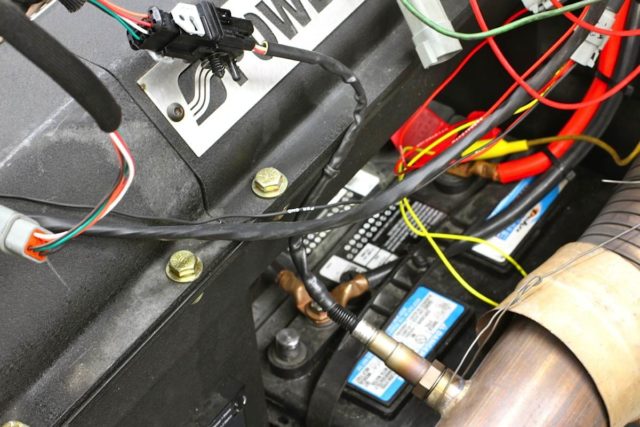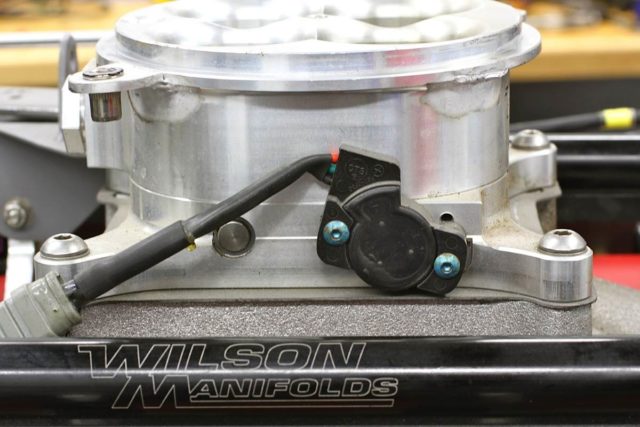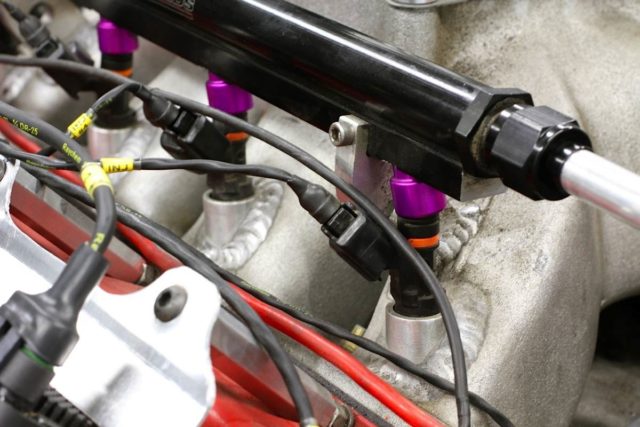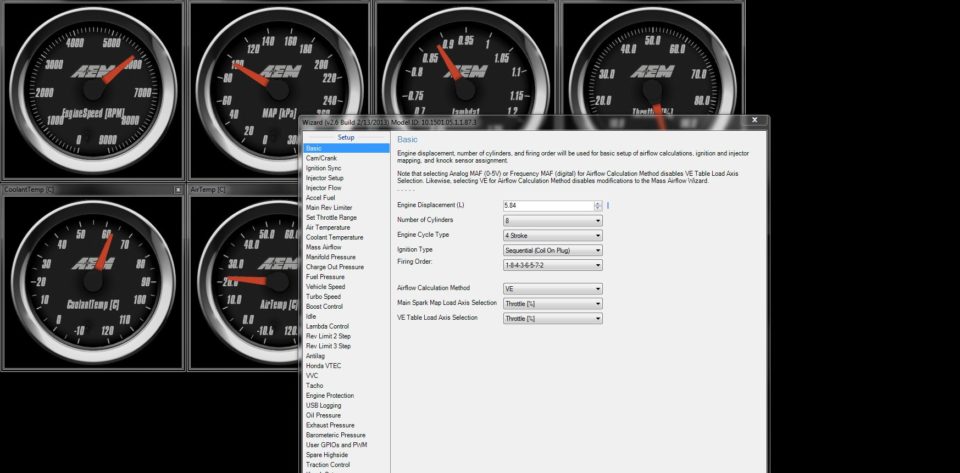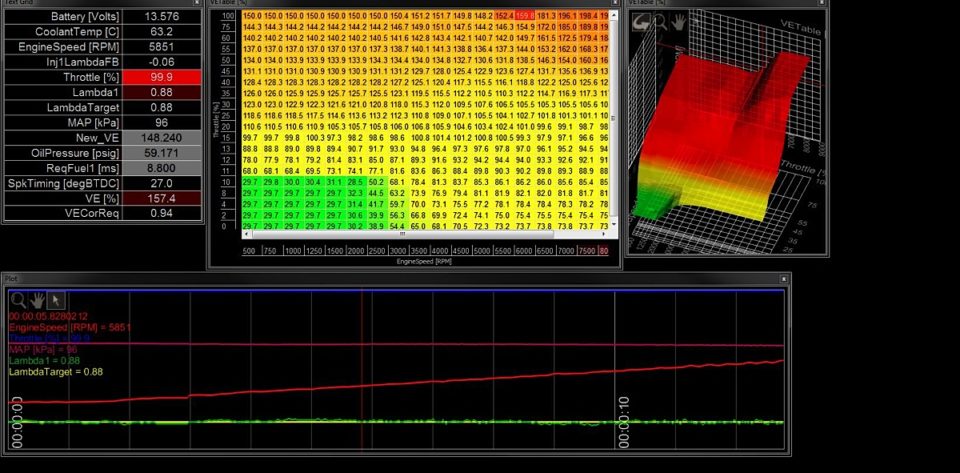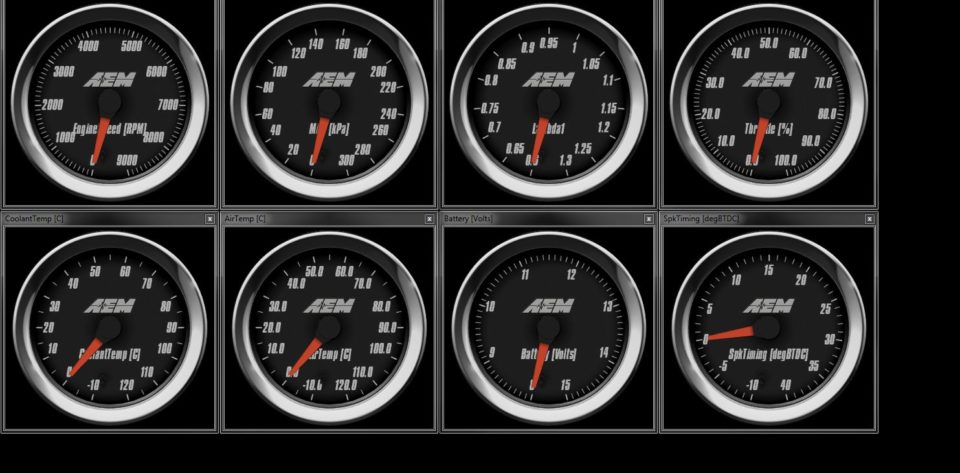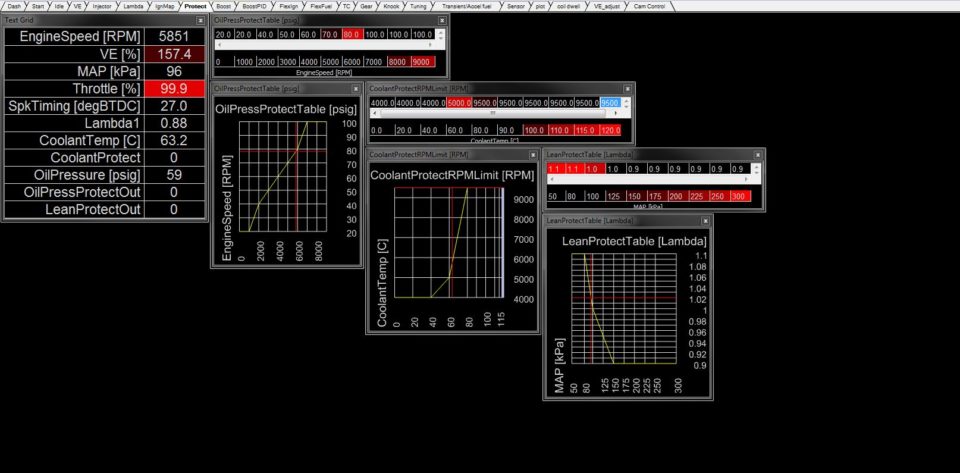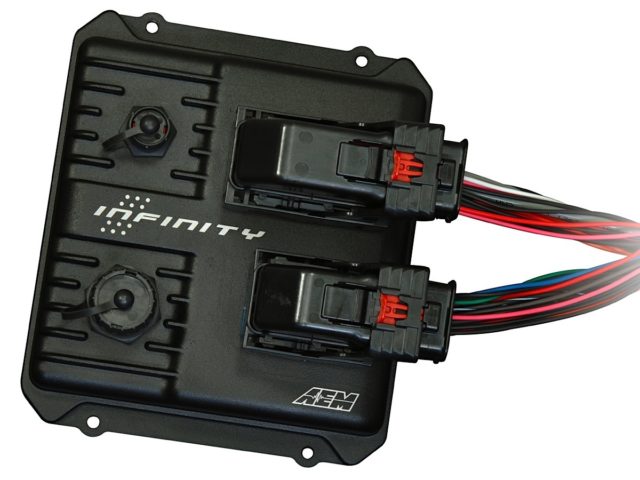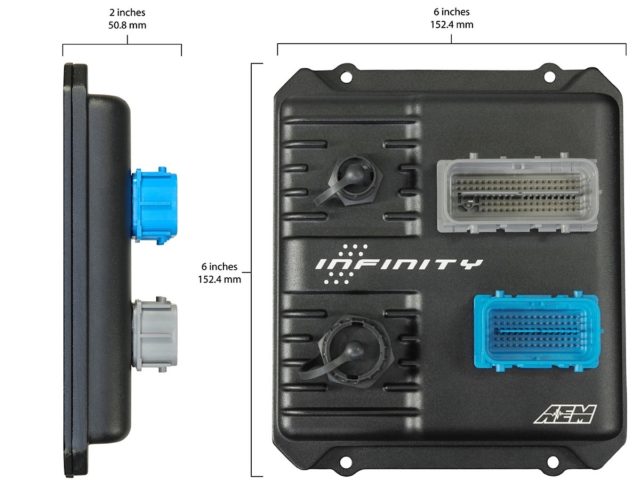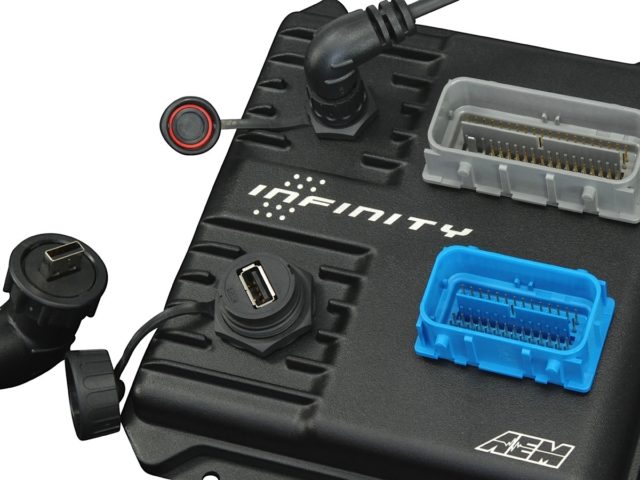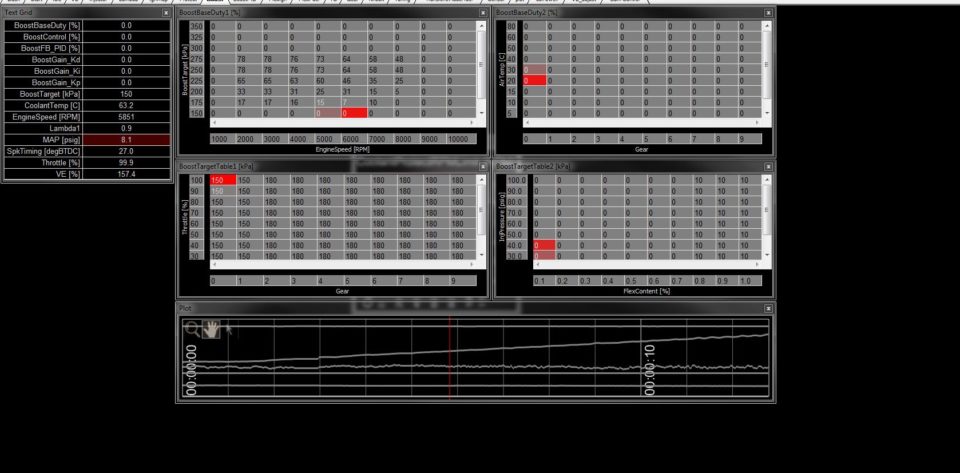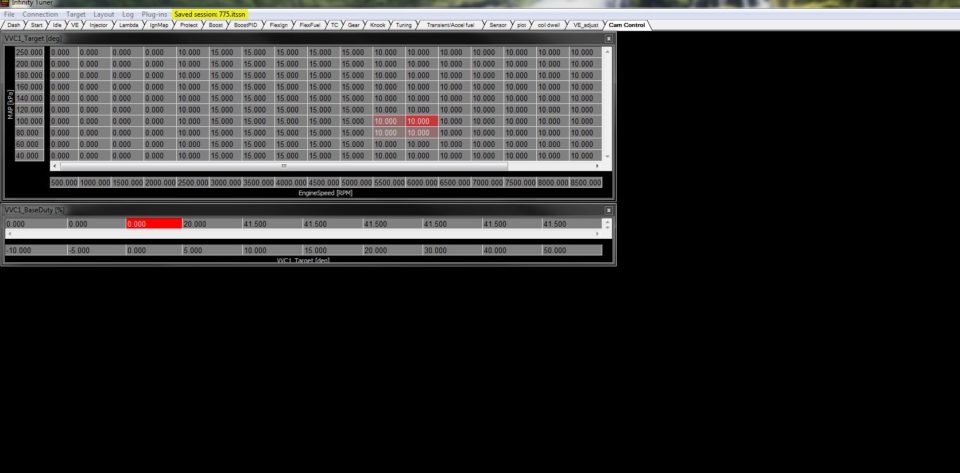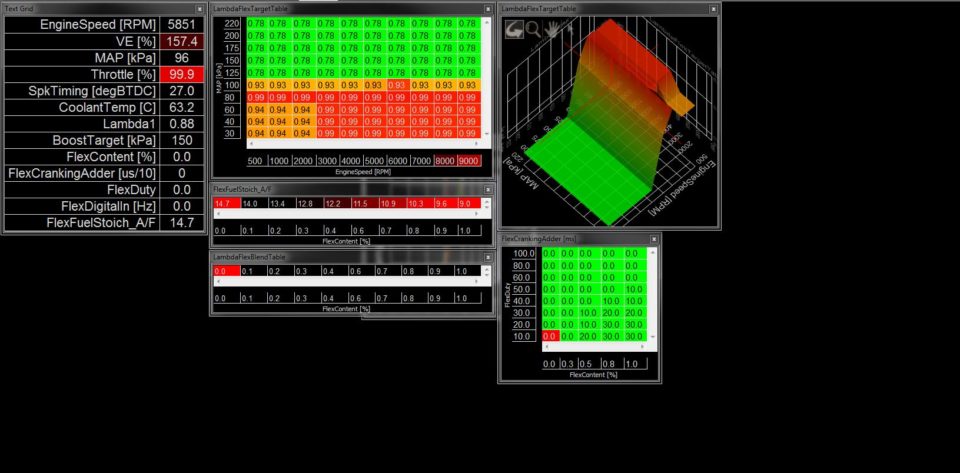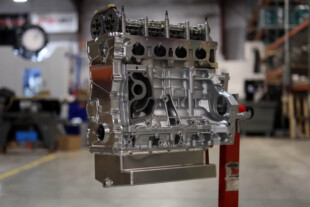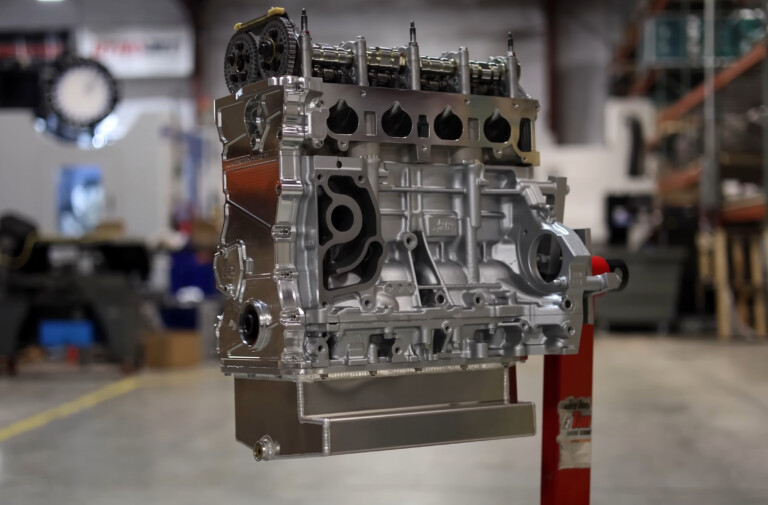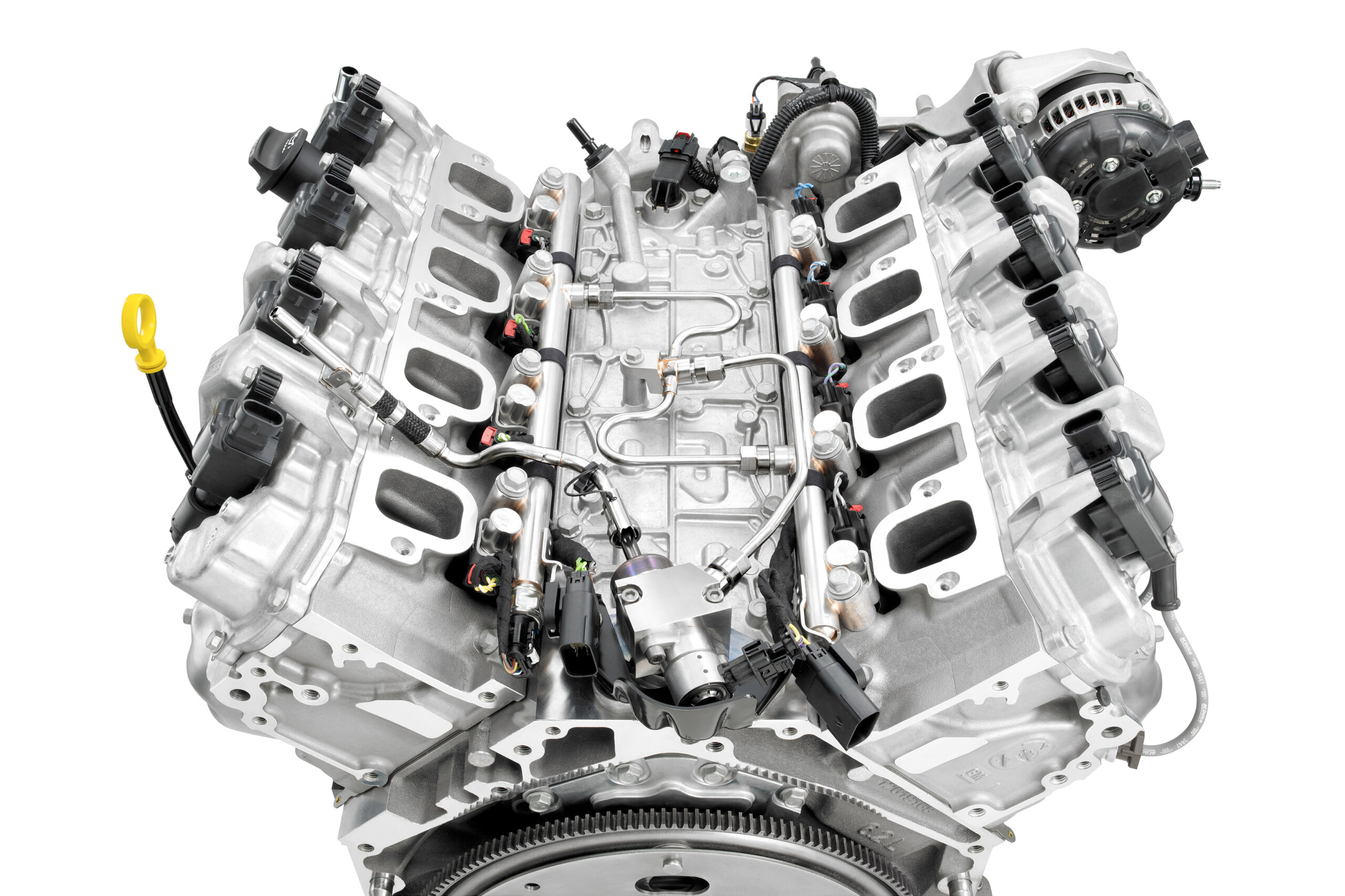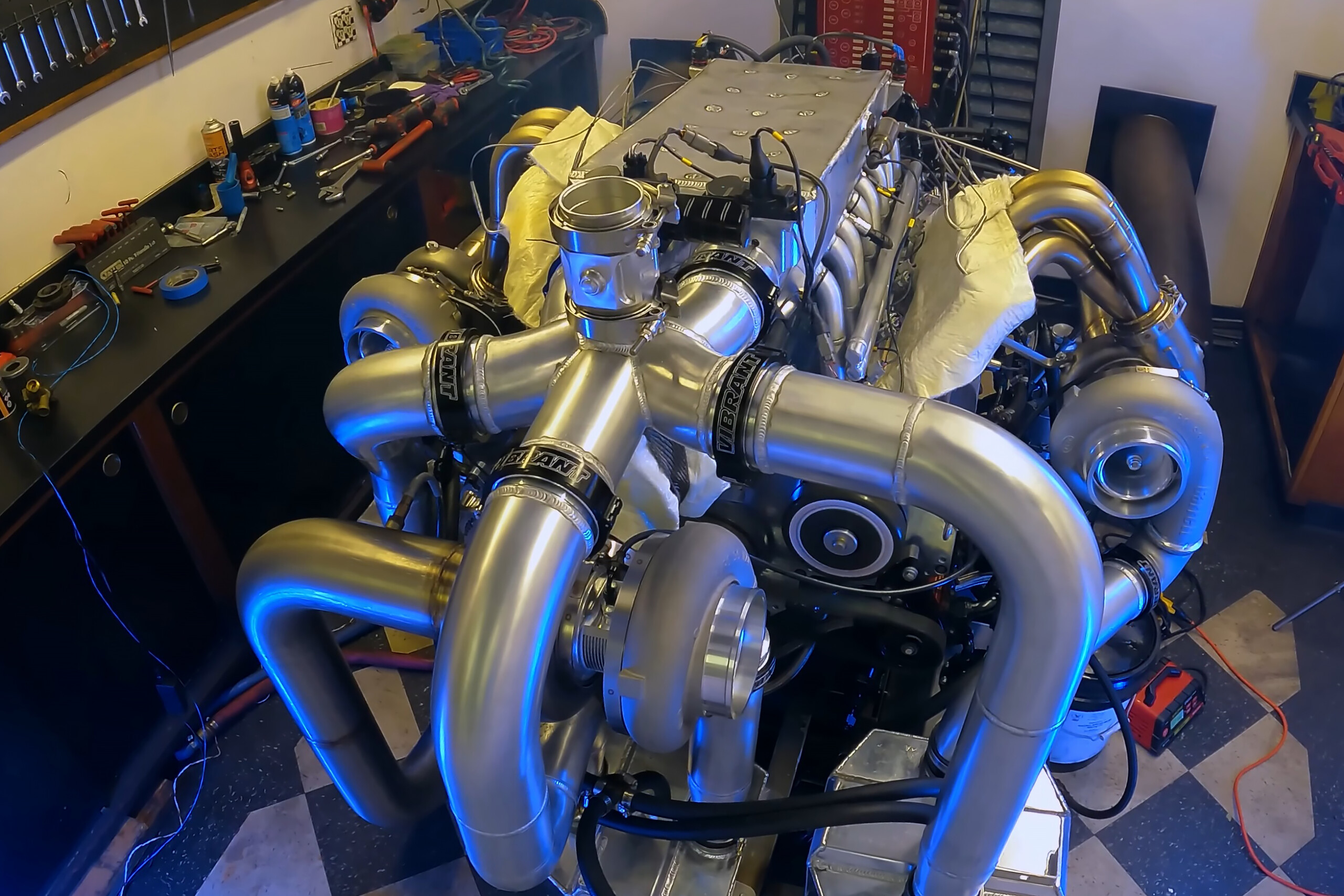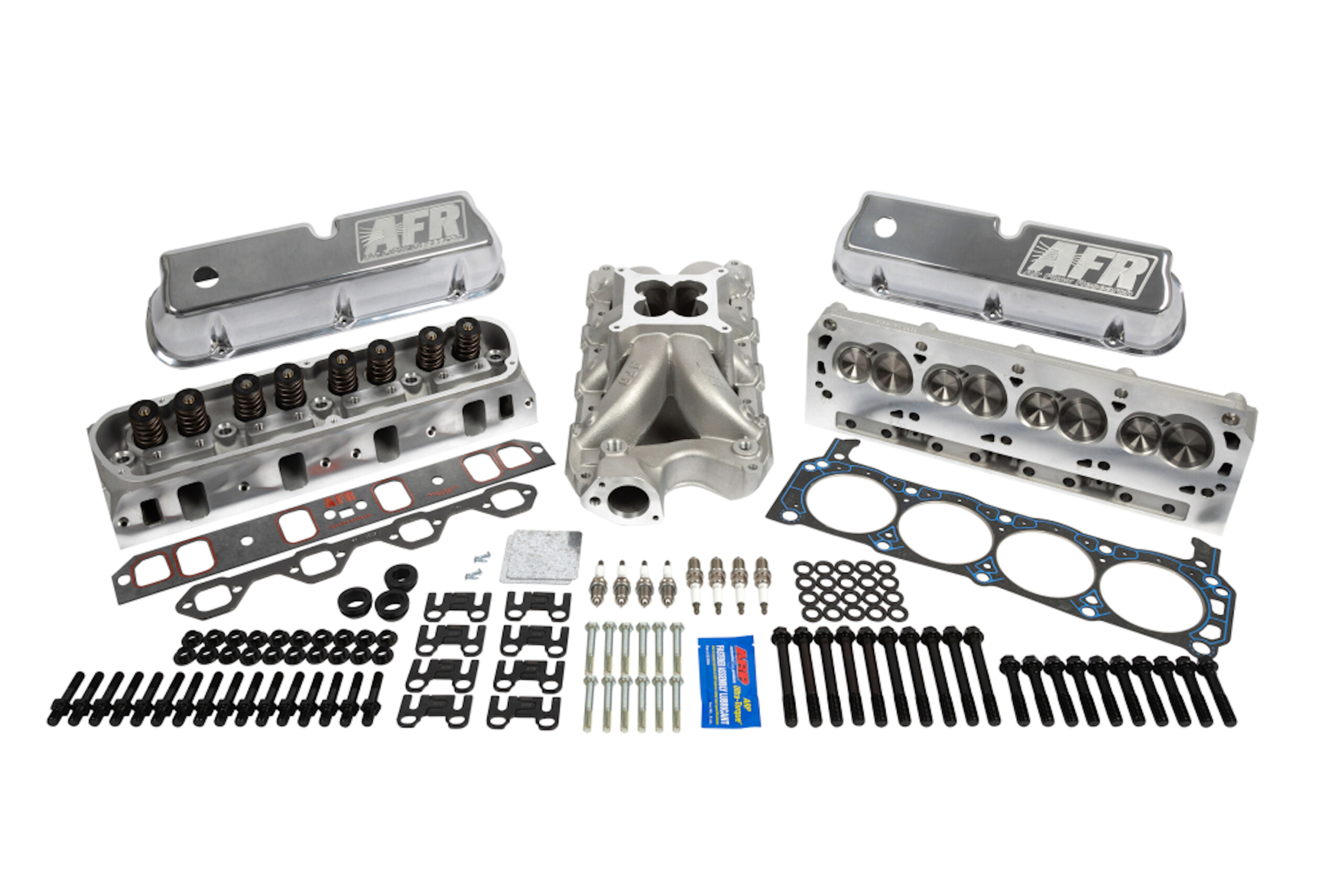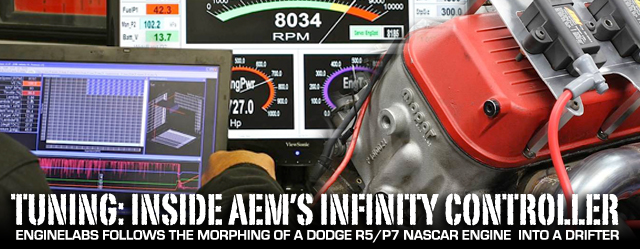 Even though Dodge has left NASCAR competition, a slice of its powertrain legacy will hammer away in a Viper sliding sideways in Japan.
Even though Dodge has left NASCAR competition, a slice of its powertrain legacy will hammer away in a Viper sliding sideways in Japan.
With help from AEM Electronics, a Dodge 356ci V8 originally built in 2006 to run in the Busch Series (now Nationwide) has been upgraded with EFI and prepped for drift competition across the Pacific. EngineLabs was on hand as the engine fired up for the first time with AEM’s new Infinity engine-management controls in place.
“We had to make sure all the components were there,” explains AEM’s Henry Schelley. “Then we just let the software do the rest.”
Schelley needed only a short afternoon on the new SuperFlow Powermark dyno at Pfaff Engines in Huntington Beach, California, to sort through the tuning options and set a strong baseline for the engine’s new owner — an international drift champion with multiple titles. This client picked up a Dodge Viper that was damaged in the tsunami and decided it would be “real cool” for the Japanese market to replace the water-logged V10 with a NASCAR V8 engine. He then purchased a pair of engines out of Evernham Motorsports.
At the time the client was considering switching over to AEM electronics for his American-based Lexus drift car, which is powered by a turbocharged Toyota 2JZ engine making around 1,300 horsepower. The big selling point was that one computer could handle all of the engine’s functions, compared to the multiple controllers the owner needed to manage boost, ignition, fuel mapping and variable cam control. A fellow drifter had a car similar to the client’s Lexus but with AEM engine management. The client drove and dyno’d that competitor’s car, discovering better mid-range power.
Mid-range power
The engine setup included, from left, AEM Smart Coils for each cylinder and a Wilson 4150-style throttle body rated at 1,136 cfm. The AEM Infinity was wired up and positioned behind the engine for the dyno test. Note the memory card option in the USB port. A custom 12-tooth crank trigger and 1-pulse cam sync distributor came with the engine.
“It’s all about mid-range power now,” says Gary Castillo, who runs Design Craft Fabrication and helped facilitate the purchase, tuning and shipment of the engine to Japan. “You’re seeing more Japanese drifters move to V8 power because it makes torque across the board.”
Next-generation Dodge NASCAR engine
Here’s the Dodge R6/P8 that replaced the R5/P7 in NASCAR racing. Note that the distributor is moved to the front and that the engine is “right-bank leading,” compared to the “left-bank leading” architecture of the R5/P7. Other improvements include improved coolant flow, redesigned oiling and lighter weight. The R6 block also has 4.500-inch bore spacing while the R5 is at 4.460-inch. The R6/P8 made its racing debut in 2008.
With the Viper’s owner convinced of the Infinity’s capability and performance, he approved prepping the Dodge V8 with the new electronics and requested the setup be verified on the dyno before taking delivery.
Tagged as Engine 134, it was built in April 2006 by Mike Ege Racing Engines in conjunction with Evernham Engines. The engine had its first dyno run on April 21 followed by a second on May 4 before heading to Kentucky Speedway for a mid-June race. The car finished 30th for Chris Cook. The engine went back on the dyno twice before an October race at Charlotte. There, Engine 134 powered Michael Waltrip to a second-place finish after qualifying 42nd and despite his comment in the build book: “Feels like I’m spotting everyone 70 horsepower.”
The engine sat out the 2007 racing season after compiling a total of 2,140,892 rev cycles. It was rebuilt for 2008 as a restrictor-plate motor but didn’t quality at Daytona with Kenny Wallace and finished 29th at Talladega with Reed Sorenson. The plate was taken off for its final outing at Kentucky where Josh Wise finished 23rd. Other changes at that time included a cam, oil pump, valve springs and rocker arms.
There were 1,905,745 total cycles on the rebuild, bringing Engine 134’s total use cycles to 4,046,637 before it was shelved, or possibly used as a development motor, and later sold.
R5 block/P7 heads
The foundation is a fifth-generation Mopar Performance R5 block with considerable man-hours of machine and prep work. Final bore is 4.174 inches. The balanced rotating assembly starts with a 3.253-inch-stroke Winberg crankshaft that sports 1.85-inch rod journal and 2.25-inch mains. The Carillo rods measure 6.050 inches and connect to custom JE pistons with a .708-inch pin. The pistons feature .77mm, .86mm and 1.99mm rings.
Small details on the conversion included, from left, an AEM MAP sensor in the intake manifold, an AEM wide-band Lambda sensor on each header collector (note how the sensor wiring connects directly to the AEM harness); an aftermarket throttle-position sensor; and injectors and fuel rails that came with the engine.
The P7 cylinder heads also received the full CNC machining and prep work before assembly. They were fitted with 2.18-inch intake and 1.60-inch exhaust valves. Combustion chamber was shaped at 41.5cc, giving the engine an 11.68:1 compression ratio. Busch/Nationwide engines run a smaller carb compared to Cup cars, but they’re also allowed to run roller camshafts.
Two different grinds were mentioned in the build book, but only one listed actual specs: 272.5/285 @ .050 duration with .436/.440 lift at the lobe. That cam was used for the engine’s final race. The build book also listed two different rocker-arm setups: 2.0:1 intake/1.9:1 exhaust and 1.75:1 intake/1.7: exhaust. Most likely, the smaller rockers were used with the cam listed, and the mystery grind was matched with the larger rockers — possibly on the plate motor. Since so much time lapsed between the engine’s last race and its sale, a different cam could be in this test engine.
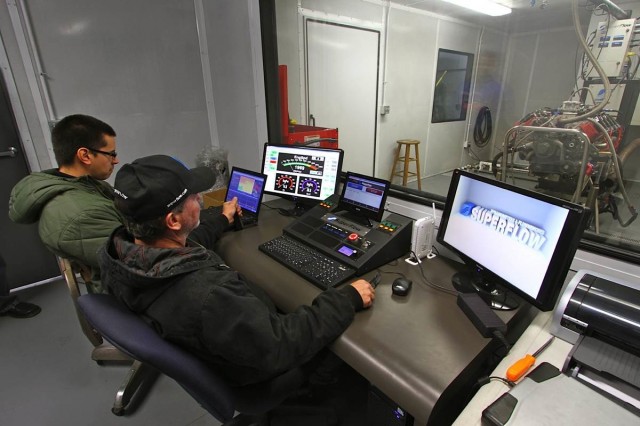
Testing was conducted on a SuperFlow Powermark dyno at Pfaff Engines. Gordon Jennings of Pfaff is at the controls while Henry Schelley monitors the engine tune.
The engine came with the Wilson manifold already converted to EFI and fitted with a throttle body and injectors. According to engineers at Wilson, that conversion was made within the last two years as that’s when the black fuel rails were introduced. AEM added coolant and MAP sensors and also installed its wide-band Lambda sensors on each header collector. “Half a harness” came with the engine, but Rywire wired up those connections into a full harness to the Infinity controller.
“It didn’t come with a coil harness, which was a blessing in disguise because we just jumped right in with an AEM harness,” adds Schelley, noting that the team had to manually turn over the engine to confirm the firing order. “Sometimes NASCAR engine builders will swap two cylinders, but this one was conventional.”
Conservative approach
For them, time is money. Usually they may spend a day on the software. We can get them tuned in a third of the time.
— Henry Schelley
With all the sensors and wiring in place, Schelley hooked up a laptop and entered in the engine vitals for the startup program, such as displacement, cylinder count and injector size.
“I didn’t do anything special to the basic fuel table, and it started right up,” says Schelley. “Once it starts, you have the Lambda sensor. You can see the air/fuel and look for places to fine tune.”
Since the AEM team didn’t know everything about the engine, ignition timing was a very conservative 20 degrees at the start but ended up at 28 on the final run. Referring back to the build book, Engine 134 ran with 31 degrees on a restrictor-plate dyno test, 32 degrees timing as an open motor when it ran at Charlotte and 33 degrees at Kentucky.
Top left: From the Set-Up Wizard menu, users input engine displacement, cylinders, ignition type, firing order, and any other primary engine parameters. Each sub menu includes basic instructions at the top of the page for quick reference. Top right: The Infinity’s tuning model is airflow based. Note the yellow and green lines at the bottom of the screen in the tuning log file. The software uses a Lambda Target algorithm to keep air/flows ratio aligned with a desired air/flow target. Bottom right: The software includes engine protection strategies including oil pressure, coolant temp and Lambda protection. Bottom left: The software features high-resolution graphics and workspaces are user configurable. This image is a simple dashboard that was used for viewing in between dyno runs and at idle.
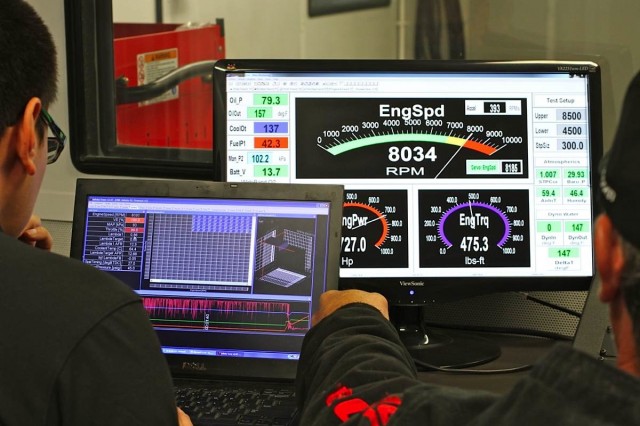
Engine functions are monitored during the dyno runs. The best pull recorded 776 horsepower at 8,400 rpm with the curve still shooting upwards.
Again being conservative, the engine was run only up to 8,400 rpm where it made 775.9 horsepower, and it was climbing hard. At 8,000 it was 760 horsepower. Peak torque of 518.1 lb-ft on the dyno was recorded at 7,100 rpm. Although hardly comparable, but just FYI, the lone dyno test noted in the build book took place February 9, 2008, and was with a 29/32-inch restrictor plate. There it made 437.7 horsepower at 7,000 rpm and peak torque was 388.4 lb-ft at 5,300 rpm. Top engine speed recorded while running Nationwide races was 8,900 rpm.
“We know there’s a lot more left in this engine,” says Schelley. “But our goal was to see how quickly we could bring it up to tune from scratch.”
The Infinity relies on airflow-based tuning models and eliminates many of the lookup and trim tables (correction tables) that were necessary in previous generation ECUs. Older pulsewidth programming strategies basically depended on the tuner telling the injectors when to open and close. With wide-band O2 sensors and 32-bit computing power capable of 400 million instructions per second, the Infinity can apply engine models to the mapping process to greatly simplify tuning.
Understanding VE
Volumetric Efficiency (VE) is not new to engine management tuning but it is a much different and simplified approach when compared to previous generation programmable ECUs. VE refers to the actual amount of air being moved in and out of the cylinders versus an engine’s static displacement capacity.
“It’s fundamentally different than AEM’s old methods. With VE, you’re mapping the efficiency of the engine’s air pumping ability versus telling a system how many milliseconds of pulsewidth to open an injector,” explains Schelley. “That always depended on the injector size, fuel pump, injector pressure, amount of injectors and other factors. When you try and map the pulse width of fuel, you’re basically trying to get the final answer without knowing why that’s the answer, so you end up with a bunch of tables that on their own don’t make much sense.”
Different views of the Infinity case. Total weight is 24 ounces. The 73-pin and 56-pin connectors are also fully sealed as are the USB and USB 2.0 high-speed ports.
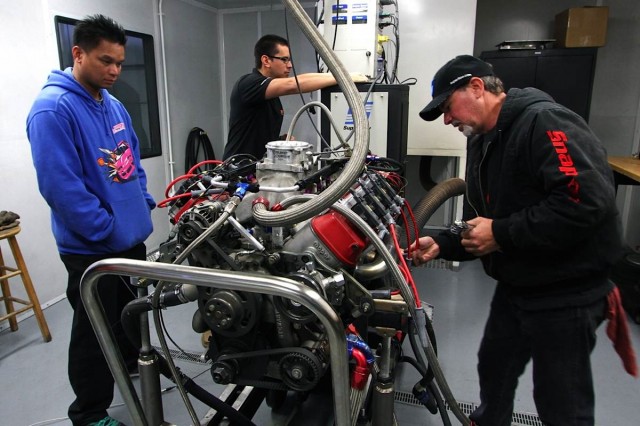
Spark plug and gradual timing changes helped improve the dyno runs before the final 776-horsepower pull. From left, Gary Castillo, Henry Schelley and Gordon Jennings.
AEM maps the airflow and engine models into the Infinity. Users enter information about their engine using the set-up Wizard, and the Infinity customizes the engine model to that specific application. All the user needs to tune is the VE, which essentially contains the entire map of the engine in one table using the Infinity’s models. Start up and the overall tuning process is simplified, and by using the Infinity’s target air/fuel ratio (AFR) function, tuning can be accomplished in a shorter amount of time on the dyno.
“With this new system, it knows details [of the engine] up front and can make better judgements,” says Schelley.
Although AEM first earned a solid reputation in the import market, the Infinity is a full-race product with numerous features designed to fine tune performance for all types of motorsports environments, including domestic drag race and road race. With its sealed enclosure and connectors, the Infinity can be used in marine and off-road applications. Infinity models are available for 1-to-12-cylinder applications.
Not for beginners
The Infinity, however, is not designed as a entry-level ECU for street-performance. ECU tuning does require some experience and background in electronic controls. Still, its VE-based programming will save time for professional tuners.
“For them, time is money,” says Schelley. “Usually they may spend a day on the software. We can get them tuned in a third of the time.”
The Dodge engine could utilize only a fraction of the Infinity’s capability. Some of the more popular functions include boost control, cam phasing adjustments and E85 tuning.
While not applicable to this engine, the Infinity has the capability to control (from left) boost, variable camshaft phasing and flex-fuel tuning. The system can control boost via four separate tables with selectable X and Y axis inputs (gear, vehicle speed, temperature, time, etc.). Up to four cams can be controlled; set the target table and the software takes care of the rest. The Infinity can adjust for ethanol content if a sensor is installed to monitor the fuel blends.
“There’s also the potential for 4-wheel traction control, launch control, no-lift shift and other torque management,” says Schelley. “We can pull timing with hard or soft cuts, depending on how you want it to work.”
Multiple strategies are available for boost control. The tuner can access full 3D maps to characterize the boost setup, starting with simple tactics that involve only rpm, throttle position or vehicle speeds. But then the boost control can be tuned with finite precision.
“Boost can be adjusted versus gear to help with limiting power in lower gears,” says Schelley. “You could also base it off vehicle speed, in case you want to increase boost in the same gear.
Other options include time, barometric pressure, flex-fuel content, throttle angle, exhaust back pressure, multi-position switch and turbo speed.
If the engine has a flex-fuel sensor, then the tune can be set to automatically adjust according to the fuel type.
“You can tune the car on pump fuel with boost limits and timing,” says Schelley. “As you blend in the ethanol, those limits will increase. It dynamically changes according to fuel content. You don’t have to flip a switch.”
The Infinity also has a number of protective controls and sensor diagnostics built in so the engine can protect itself. Again, the tuner has full control. There could be oil pressure versus rpm, rev limits for low coolant temperature until the engine warms up and even timing cuts if the air-fuel ratio gets outside a designated range. The tuner can ask for just a warning light at critical conditions or impose rev limits.
Additional tuning features are planned for the Infinity, including adapting drive-by-wire and multiple-stage nitrous control. For a full list of the Infinity features and capabilities, visit the AEM website.



